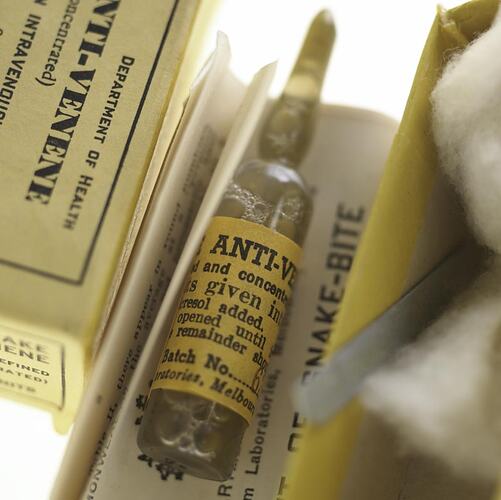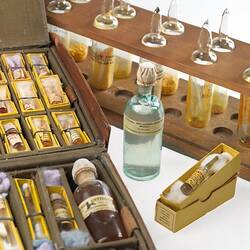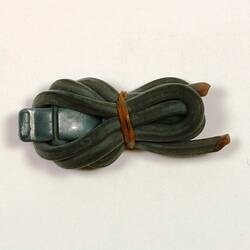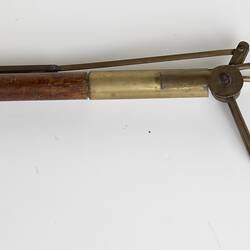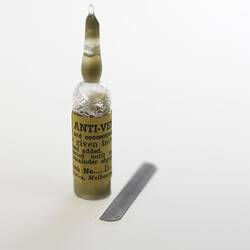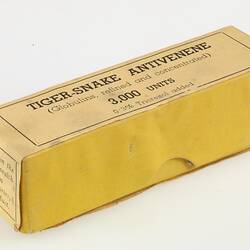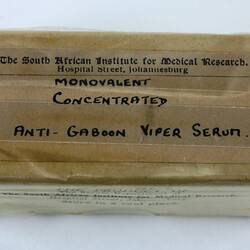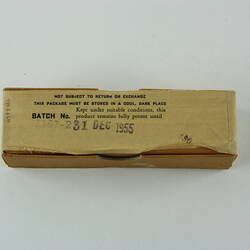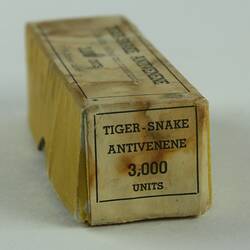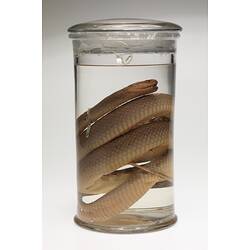Summary
The snakes, spiders, reptiles and jellyfish of Australia commonly rank among the most dangerous animals in the world thanks to a combination of their venom, defensiveness and proximity to populated areas. As a result Australia is one of world leaders in venom and antivenom research.
What is Venom?
Venom is toxic substance produced by some animals that is injected into prey or an enemy and has an injurious or deadly effect. All venoms have different forms and may have one or more of the following actions.
. Neurotoxicity: attack the brain and nervous system causing symptoms such as cramps, and paralysis
. Coagulopathy: limits the body's ability to form blood clots resulting in excessive bleeding
. Myotoxicity: attack the body's muscles causing symptoms such as muscle pain, tenderness and weakness
. Cytotoxicity: attack the body's cells causing damage to tissue causing blisters and lesions
What is Antivenom?
Antivenoms are produced by injecting animals such as sheep, horses and rabbits with very small amounts of venoms over an extended period of time. This allows the animal to build up antibodies to the different toxins in the venom, without doing any harm to the animal. Eventually a small amount of plasma extracted from the animal is used to create an antivenom which can then be used to treat humans affected by the venom of particular animals.
Research on venoms in Australia has focused on and succeeded in four key areas: discovery of the properties of venoms, improvement in first-aid treatment of venomous bites and stings, venom immunodiagnosis, and development of new antivenoms.
The Beginnings of Antivenom Therapy in Australia: Charles Martin & Frank Tidswell
Antivenom therapy in Australia built on Frenchman Albert Calmette's work in 1894 on passive immunisation which suggested that the serum of horses immunised against cobra venom would protect a human patient against any snake bite. Around 1900 Charles Martin (Universities of Sydney and Melbourne) made several important advances relating to venoms these included: proving that Calmette's anti-venom was not universal (ie it couldn't treat a bite from every type of snake); undertaking the first investigations into the chemistry of Australian venoms; studying the action of venom on the body and its systems; suggesting that antivenom should be administered by intravenous injection; and concluding that the volume of antivenom used in treatment must be influenced by the dose of venom injected.
In 1898 Frank Tidswell undertook pioneering experiments in active immunisation using tiger snake venom. Then in 1901 he produced Australia's first experimental antivenom by immunising a horse with tiger snake venom - 10g of venom was injected into the horse over a 3 and a half year period. Tidswell also published the first data on the venom yields of Australian snakes and developed the first database about the epidemiology of the snake bite in Australia.
Australia's First Commercial Antivenom: 1930
In 1928 CSL (Commonwealth Serum Laboratories) and WEHI (the Walter and Eliza Hall Institute) began a federally-funded study into animal venoms looking at snake, spider, mussel, bee and platypus toxins. The research was led by Frank Morgan from CSL and Neil Fairley and Charles Kellaway from WEHI. In order to obtain the amounts of venom required for the research they partnered with The Melbourne Zoo using animals from the Snake House and the Zoo's snake catcher to help with handling the animals and milking the venom. In just eight months they milked over 300 snakes and by October 1930 the first tiger snake antivenom was available commercially.
In 1934 CSL in collaboration with WEHI established an antivenom research department, the collaboration continued until 1941 at which time Kellaway's work on venoms was coming to an end, finishing WEHI's involvement in venom research.
Work Continues: 1950s
World War Two saw CSL focus on producing tetanus vaccine and preventive agents for smallpox, typhoid fever, plague and cholera for Australian Servicemen and women, limiting venom research. While CSL had produced experimental antivenoms for many species it wasn't until July 1955 that Australia's second commercial snake antivenom for the taipan was released. This was followed by antivenoms for: the brown snake (1956), red back spider (1956), death adder (1958), black snake (1959), stonefish (1959) and sea snake (1961). In 1962 a polyvalent snake antivenom was released to treat victims where the snake was unknown.
Branching Out: 1970s-Present
While development of new antivenoms has slowed since the 1950s CSL has developed and successfully used two new antivenoms since that time. In 1970 an antivenom for the box jellyfish was used successfully, followed by one for the funnel web spider in 1981. Today CSL continues as the only producer of human antivenoms in Australia.
Venoms & Antivenoms in the Museum's Collections
One of the most interesting objects in the Museum's collections relating to the development of antivenoms in Australia is the taipan snake collected by Kevin Budden, which was the first taipan to be milked for the purpose of antivenom production. Although bitten and killed by the snake Budden insisted it be kept and its venom milked for research purposes. Included in the Museum's CSL collection are vials and packing of tiger snake antivenom created by CSL in the early 1950s.
References
Mirtschin, Peter (2006). 'The pioneers of venom production for Australian antivenoms', Toxicon (48, No.7), pp. 899-918
Warrell, David (2006). 'Australian toxinology in a global context', Toxicon (48, No.7), pp. 718-725
White, Julian (1998). 'Envenoming and Antivenom use in Australia', Toxicon (36, No. 11), pp. 1483-1492
Winkel, Kenneth., Mirtschin, Peter. & Pearn, John (2006) 'Twentieth century toxinology and antivenom development in Australia', Toxicon (48, No.7), pp. 738-754
More Information
-
Keywords
Venom, Anti-Venoms, black snakes, brown snakes, tiger snakes, Snakes, tiger snakes
-
Authors
-
Article types
